
Frederick is a city in and the county seat of Frederick County, Maryland. It is part of the Baltimore–Washington Metropolitan Area. Frederick has long since been an important crossroads, located at the intersection of a major north–south Native American trail and east–west routes to the Chesapeake Bay, both at Baltimore and what became Washington, D.C. and across the Appalachian mountains to the Ohio River watershed. It is a part of the Washington-Arlington-Alexandria, DC-VA-MD-WV Metropolitan Statistical Area, which is part of a greater Washington-Baltimore-Arlington, DC-MD-VA-WV-PA Combined Statistical Area. The city's population was 78,171 people as of the 2020 United States census, making it the second-largest incorporated city in Maryland. Frederick is home to Frederick Municipal Airport, which accommodates general aviation, and Fort Detrick, a U.S. Army bioscience/communications research installation and Frederick county's largest employer.

Robert Mills was a South Carolina architect known for designing both the first Washington Monument, located in Baltimore, Maryland, as well as the better known monument to the first president in the nation's capital, Washington, DC. He is sometimes said to be the first native-born American to be professionally trained as an architect. Charles Bulfinch of Boston perhaps has a clearer claim to this honor.
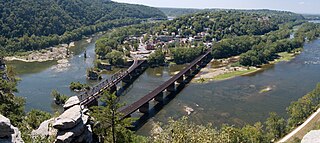
Harpers Ferry National Historical Park, originally Harpers Ferry National Monument, is located at the confluence of the Potomac and Shenandoah rivers in and around Harpers Ferry, West Virginia. The park includes the historic center of Harpers Ferry, notable as a key 19th-century industrial area and as the scene of John Brown's failed abolitionist uprising. It contains the most visited historic site in the state of West Virginia, John Brown's Fort.

Buckeystown is an unincorporated community and census-designated place (CDP) in Frederick County, Maryland, United States. As of the 2010 census the population was 1,019. Buckeystown Historic District and Buckingham House and Industrial School Complex were listed on the National Register of Historic Places in 1982. Carrollton Manor was listed in 1997. Former Congressman Roscoe Bartlett lives on a farm in the town.
U.S. Route 15 (US 15) is a part of the U.S. Highway System that runs from Walterboro, South Carolina to Painted Post, New York. In Maryland, the highway runs 37.85 miles (60.91 km) from the Virginia state line at the Potomac River in Point of Rocks north to the Pennsylvania state line near Emmitsburg. Known for most of its length as Catoctin Mountain Highway, US 15 is the primary north–south highway of Frederick County. The highway connects the county seat of Frederick with Point of Rocks, Leesburg, Virginia, and Charles Town, West Virginia, to the south and with Thurmont, Emmitsburg, and Gettysburg, Pennsylvania, to the north. US 15 is a four-lane divided highway throughout the state except for the portion between the Point of Rocks Bridge and the highway's junction with US 340 near Jefferson. The highway is a freeway along its concurrency with US 340 and through Frederick, where the highway meets US 40 and Interstate 70 (I-70). US 15 has a business route through Emmitsburg.
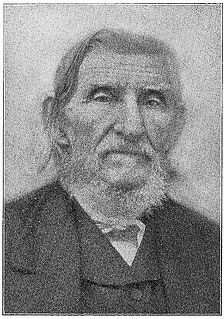
John Christian Frederick Heyer was the first missionary sent abroad by Lutherans in the United States. He founded the Guntur Mission in Andhra Pradesh, India. "Father Heyer" is commemorated as a missionary in the Calendar of Saints of the Lutheran Church on November 7, along with Bartholomaeus Ziegenbalg and Ludwig Ingwer Nommensen.

Saint John's Catholic Prep is a private, Roman Catholic, coeducational, college preparatory high school in Buckeystown, Maryland, located just southwest of Frederick City. At the time of its founding in 1829, it was located on Second Street in eastern downtown Frederick. Beginning in 1958 and for 45 years thereafter, the school was housed in the historic "Prospect Hall" mansion, (1787–1803), also just southwest of Frederick. St. John's was the first independent Roman Catholic school in the state of Maryland. It was also the first Roman Catholic secondary school in the state of Maryland.
Douglass is a community on the north side of Memphis, Tennessee. Douglass was named after Frederick Douglass, who was admired by William Rush-Plummer, the one-time owner of the land where the Douglass neighborhood currently stands.

St. Robert Bellarmine Catholic Church is a Catholic parish on North Fifth Street in Burbank, California. It includes a Catholic church, elementary school, and high school. Founded in 1907, it was one of the first Catholic churches in the San Fernando Valley. Known as Holy Trinity Parish until 1939, it was renamed in honor of St. Robert Bellarmine. The church and school buildings on the St. Robert Bellarmine campus are modeled after colonial American buildings, including Monticello, Independence Hall, Mount Vernon and the library at the University of Virginia.

St. Mary's Catholic Church, also known as St. Mary of the Visitation Church, is a parish church of the Diocese of Davenport which is located in Iowa City, Iowa, United States. The church building and rectory were listed together on the National Register of Historic Places in 1980. They were both included as contributing properties in the Jefferson Street Historic District in 2004. The parish's first rectory, which is now a private home, is also listed on the National Register as St. Mary's Rectory. It is located a few blocks to the east of the present church location at 610 E. Jefferson St.
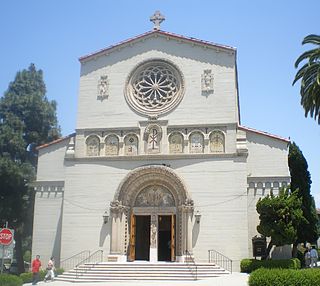
Precious Blood Catholic Church is a Roman Catholic church and parish in the Los Angeles Archdiocese, Our Lady of the Angels Pastoral Region. The church is located one block north of Lafayette Park at 435 South Occidental Boulevard in the Westlake section of Los Angeles, California. The current Italian Romanesque church structure was dedicated in 1926.

St. Michael's Catholic Church is a former parish of the Diocese of Davenport. The church is located in the unincorporated village of Holbrook, east of Parnell, Iowa, United States. It is listed on the National Register of Historic Places as St. Michael's Church, Cemetery, Rectory, and Ancient Order of Hibernians Hall in 1983.
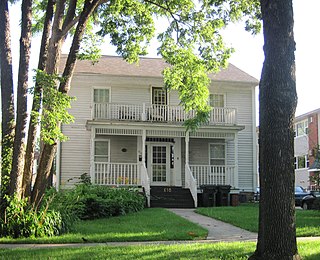
The former St. Mary's Rectory is a historic building located in Iowa City, Iowa, United States. Now a private home, the residence housed the Catholic clergy that served St. Mary's Catholic Church from 1854 to 1892. At that time the house was located next to the church, which is four blocks to the west. It was listed on the National Register of Historic Places in 1995.

St. Katherine's Historic District is located on the east side Davenport, Iowa, United States and is listed on the National Register of Historic Places. It is the location of two mansions built by two lumber barons until it became the campus of an Episcopal girls' school named St. Katharine's Hall and later as St. Katharine's School. The name was altered to St. Katharine-St. Mark's School when it became coeducational. It is currently the location of a senior living facility called St. Katherine's Living Center.

The Old Church of St. Peter is a Roman Catholic church established under the authority of the Roman Catholic Archdiocese of New York in Poughkeepsie, Dutchess County, New York in 1837. It is the second oldest Catholic Church on the Hudson and is considered the Mother Church of the Hudson Valley because from it all the parishes in Ulster and Dutchess counties were founded. The church is also referred to as Our Lady of Mount Carmel since 1965 when St. Peter's parish relocated to Hyde Park, New York and the parish of Our Lady of Mount Carmel church relocated to site.
Petersville is an unincorporated community in Frederick County, Maryland, United States. Petersville is located at the junction of Maryland routes 79 and 180, 1.3 miles (2.1 km) northeast of Rosemont.

St. Michael's Evangelical Lutheran Church is a historic church building in the Mount Airy neighborhood of Philadelphia, just north of the Germantown neighborhood. The congregation was founded sometime before 1728 and three successive church buildings have occupied the same location since that time. The church was closed in 2016.
Saint Paul Catholic Church is a Catholic parish located in Ellicott City, Maryland. It was founded in 1838 and is part of the Archdiocese of Baltimore. Babe Ruth married here.
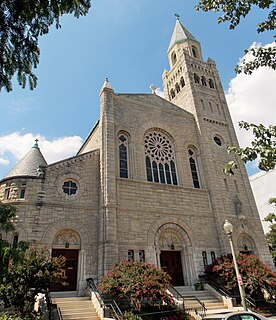
St. Peter's Church, also referred to as St. Peter's on Capitol Hill, is a Roman Catholic church located on Capitol Hill in Washington, D.C., within the Archdiocese of Washington. Founded in 1820, St. Peter's is the second oldest Catholic parish in the City of Washington. The church building was originally constructed in 1889. However, it was destroyed by a fire in 1940 and rebuilt. The church's motto is, "To be a tangible manifestation of Christ in the community."





















